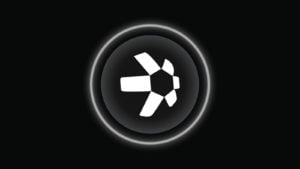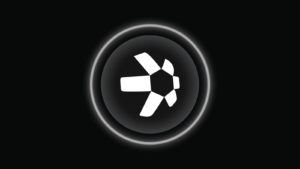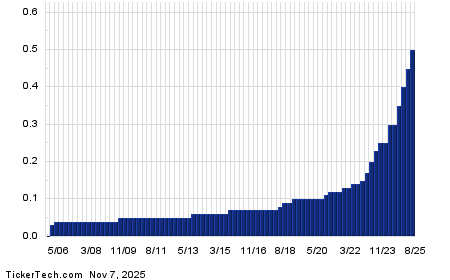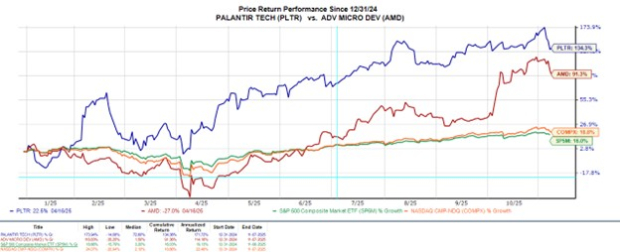Countries and financial institutions are embracing the ISO 20022 financial messaging standard, seeking to simplify the regulation of financial data exchange. However, most cryptocurrencies currently lack the capability to meet these standards. The adoption of this standard can potentially dispel doubts held by many opponents of blockchain technologies, given that ISO-compliant cryptos provide indisputable proof of their legitimacy and hold promise for widespread adoption. Transparent and comprehensible transactions in such networks are a stepping stone to the implementation of standardized analytics, a critical trench for investors who depend on objective analysis.
Quant (QNT)

Source: Zeedign.com / Shutterstock.com
Quant (QNT-USD) takes a unique approach to connecting blockchain networks. It is built on the Overledger platform, serving as the foundation for interoperability solutions. With Quant, even developers with minimal expertise can craft and deploy smart contracts across multiple chains. The project has been diligently working to enhance its compatibility with traditional financial systems in every feasible way. One such stride towards this goal was the adoption of the ISO 20022 standard, enabling the platform to streamline information exchange across diverse networks and ascend as one of the forerunners among ISO-compliant cryptos.
The platform harbors ambitious plans to serve as a repository for Web 2 businesses and assets while seamlessly catering to the demands of the Web3 economy. Consequently, Quant aspires to become the gold standard for blockchain-based development. The initial groundwork in this direction has already been laid, with the project establishing partnerships with the Inter-American Development Bank (IADB) and Oracle (NYSE:ORCL).
Quant’s technological architecture stands head and shoulders above the majority of crypto projects. As the blockchain operating system supports the interaction of distributed ledger technologies (DLT), the network evolves into a cohesive mechanism, with the QNT token forming the crux of this ecosystem. Regulated by the Swiss Financial Market Supervisory Authority (FINMA), QNT remains independent of the blockchain, proffering benefits not just to developers but to users as well, who can interact with multi-chain decentralized applications (mDApps) within the network.
Notably, a staggering 99% of the project’s tokens are already in circulation. Meanwhile, the supply of QNT is capped at 14.6 million tokens, with no plans for future token issuance. Consequently, the limited supply of QNT, coupled with its expanding utility, could potentially buoy its value.
Hedera HashGraph (HBAR)

Source: Shutterstock
Since its inception in 2018, Hedera HashGraph (HBAR-USD) has exhibited an innovative approach towards swift and reliable cryptocurrency transactions. Operating on a public distributed ledger at a web-scale and leveraging hashgraph consensus, the project has achieved a throughput exceeding 10,000 transactions per second.
This representative of ISO-compliant cryptos transcends mere cryptocurrency services, delving into file storage and smart contract provisions, thereby expanding its utility for corporate clients.
HBAR tokens form the backbone of the Hedera ecosystem, powering its network and ensuring stable operation. The proof-of-stake consensus mechanism in the network guarantees the security of services like HBAR transfer, data logging, and management of fungible and non-fungible tokens.
Prioritizing interoperability, Hedera has cemented its compliance with the ISO 20222 standard, enabling seamless integration with financial systems and standing in harmony with global payment and banking standards such as SWIFT. When combined with the scalability of the crypto project, Hedera emulates the characteristics of a leading participant in the decentralized finance market.
The practical application of Hedera Hashgraph technologies has unveiled the project’s versatility across multiple industries. Collaborating with Électricité de France catalyzed a revolution in renewable energy certificates across the globe. Blockchain technology now enables the demonstration of commitment to clean energy.
The distributed ledger Acoer can trace the supply chain of pharmaceuticals, while The Coupon Bureau has established a system for tracking coupons. These accomplishments, among others over the past few years, attest to Hedera’s indomitable spirit.
Stellar (XLM)
Revolutionizing Financial Infrastructure: A Closer Look at Stellar (XLM-USD)
Empowering Global Financial Transactions
Stellar (XLM-USD) has been a game-changer since 2014, revolutionizing the traditional view of global money flow. By connecting individuals, banks, and payment systems, Stellar ensures fast, seamless, and inclusive money transfers. The key lies in the Stellar Consensus Protocol, which guarantees transaction integrity and allows the project to transcend conventional banking systems.
Redefining Speed, Affordability, and Accessibility
Unlike a standard cross-border transfer, which can take days to complete, Stellar processes transactions in a matter of seconds. This not only redefines speed but also cost-efficiency. Low fees have made the network accessible to a broad spectrum of individuals and businesses, while peer-to-peer transactions have removed the barriers for those who were previously excluded from mainstream banking services.
The Native Lumen Token and Market Access
At the heart of Stellar’s inclusive service is its native XLM token, Lumen. This token has reinforced Stellar’s position in the market, enabling multi-currency transactions based on the location of the counterparties. With 100 billion Lumens issued at launch, and a 1% annual supply increase, Stellar’s influence and market presence have only expanded over time.
Embracing Enterprise and Regulatory Standards
Stellar’s emergence as a part of the ISO-compliant cryptocurrency list underscores its commitment to developing ties with central banks across the globe. This achievement positions Stellar among a select few projects with access to trillion-dollar markets. As its technological capabilities continue to grow, the platform has cemented its status as a pioneer in the industry.
Unleashing New Horizons with Protocols and Smart Contracts
The introduction of Protocol 20 and the subsequent rollout of Soroban smart contracts have opened up new horizons for Stellar’s financial services in the realm of decentralized applications. These developments are not only expanding the scope of use cases but are also propelling Stellar into a league of its own within the global financial infrastructure landscape.







